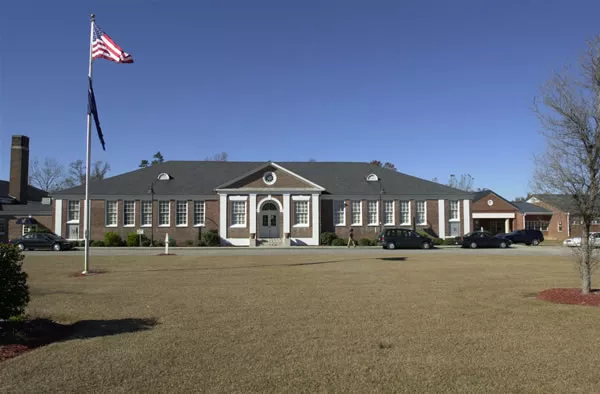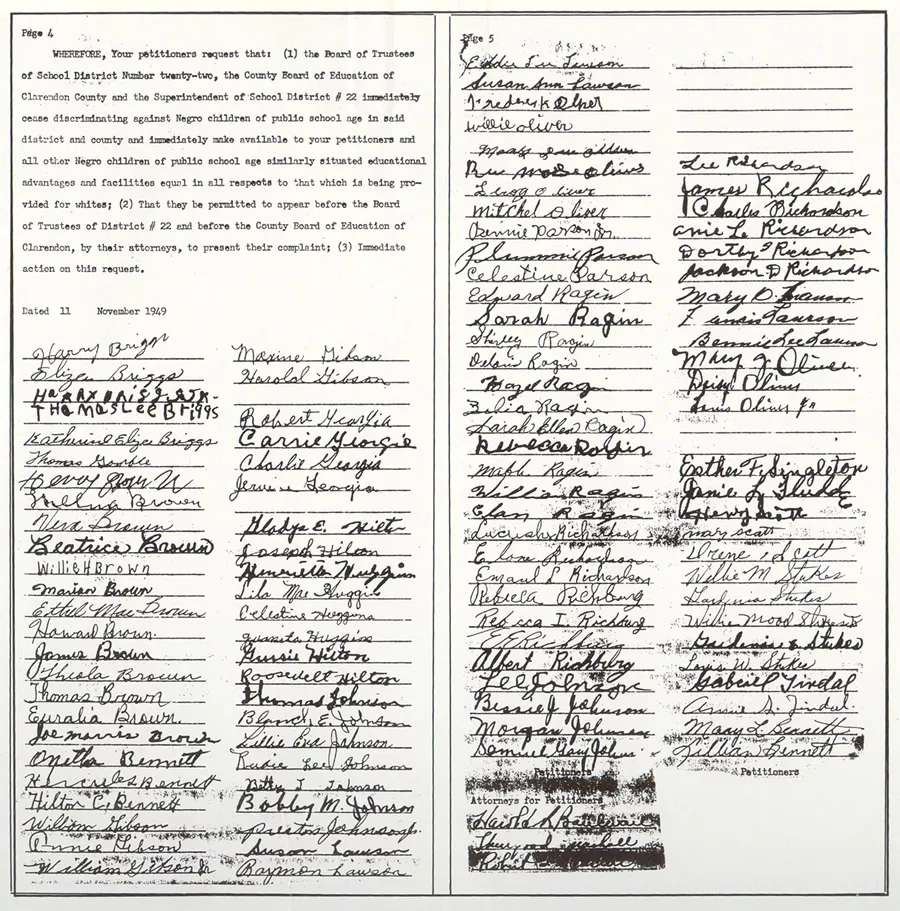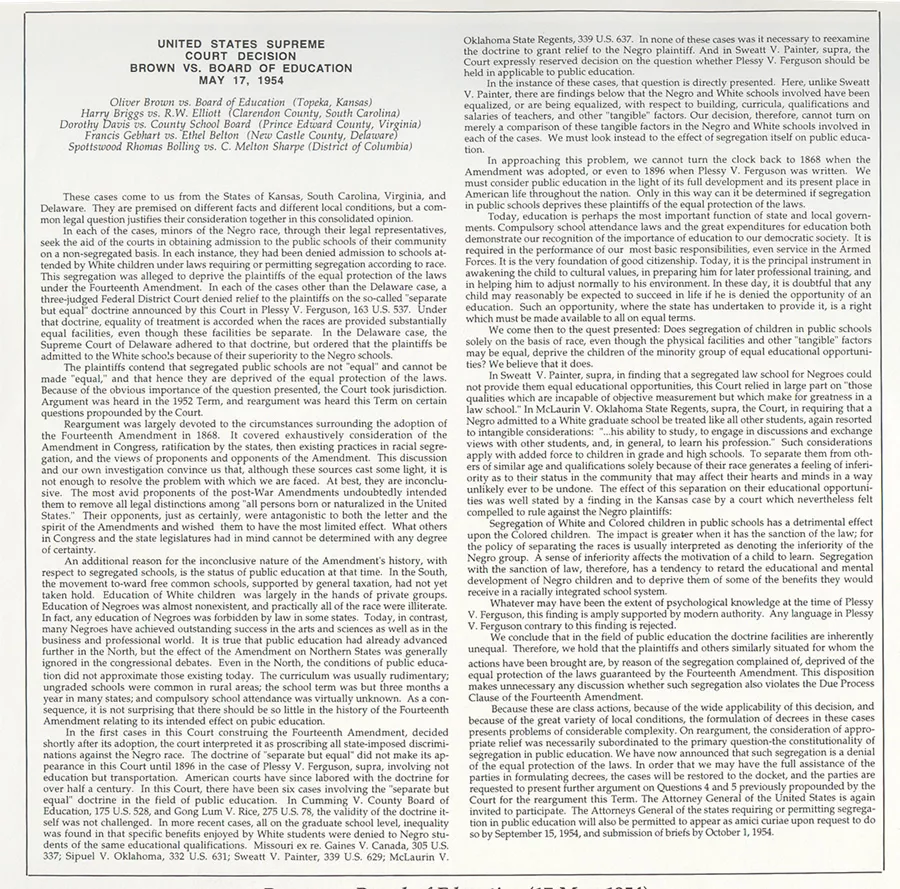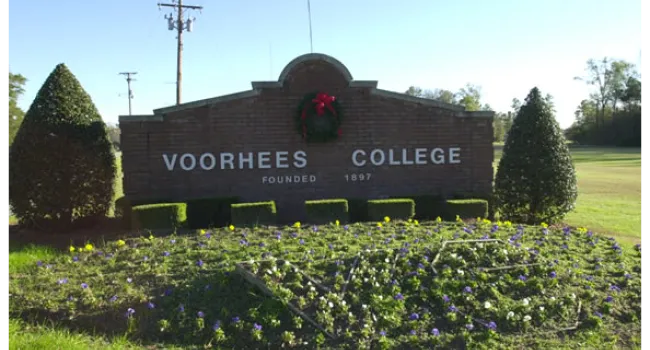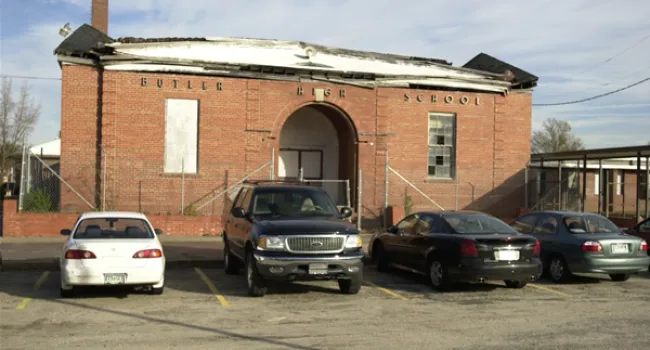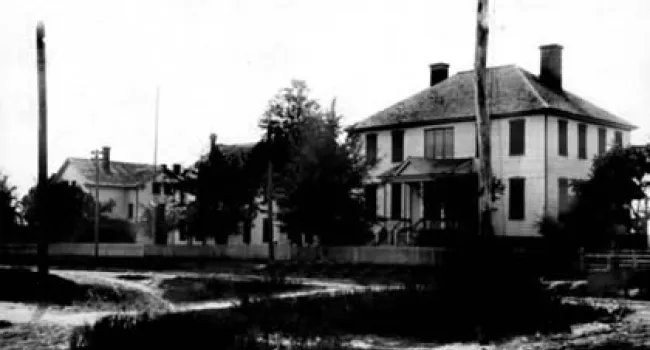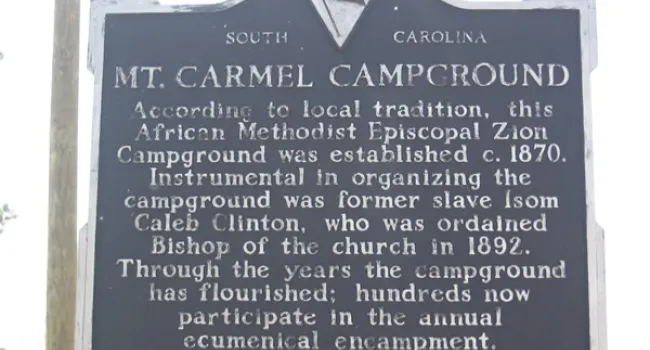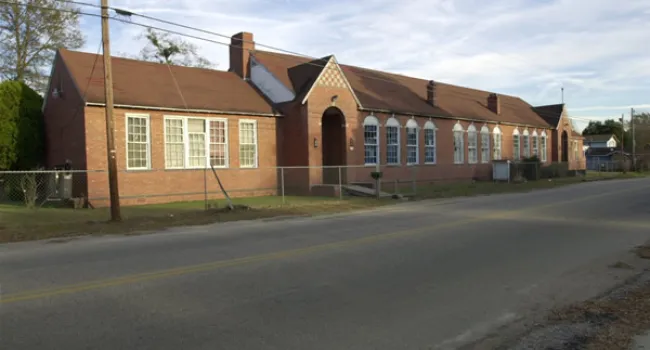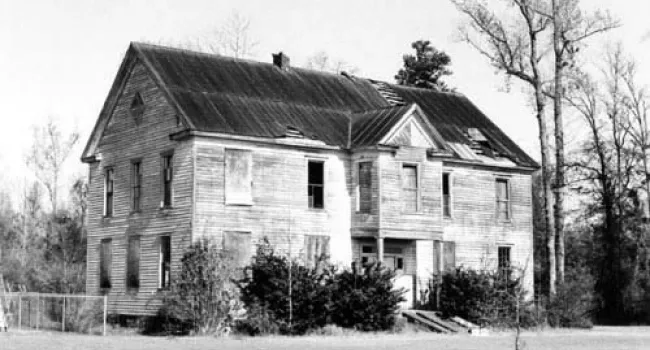The building that housed Summerton High School from circa 1936 to the mid-1960s is located at 12 South Church Street in Summerton. In the middle of the twentieth century, the all-white high school was said to have been "uncrowded, and maintained in first class condition" while schools for African American children in the same district were "old and overcrowded and in a dilapidated condition."
In 1949, more than 100 people signed a petition to improve conditions in the black schools. The petition was ignored. The result was that, with the help of the NAACP, twenty plaintiffs filed the Harry Briggs, Jr., et al. vs. Elliott, et al. lawsuit that challenged segregation in public schools. After losing in District Court, the NAACP lawyers appealed the case to the U.S. Supreme Court.
The Briggs case was heard along with four similar lawsuits from Kansas, Virginia, Delaware and the District of Columbia. In 1954, the Supreme Court decided in favor of the plaintiffs and struck down segregation in public education in the United States. The cases and the decision are commonly known as Brown v. Board of Education.
Clarendon County did not integrate its schools until forced to do so in the mid-1960s. After only one year of integration, Summerton High School closed, leaving Scott's Branch High School (located on U.S. Route 301N) as the only high school in that school district.
The building that formerly served as Summerton High School is now occupied by the school district's administrative offices. The old Scott's Branch School was razed and the site is now occupied by Scott's Branch Intermediate School.
Standards
- 5.4.CC Analyze the continuities and changes of race relations in the United States and South Carolina following the Supreme Court decisions of Briggs v. Elliott and Brown v. Board of Education.
- 8.5.CX Analyze the correlation between the Modern Civil Rights Movement in South Carolina and the U.S.
- This indicator was designed to foster inquiry into the role of South Carolina in the Modern Civil Rights Movement, to include the influence of court cases such as Briggs v. Elliot and Flemming v. South Carolina Electric and Gas. This indicator was also developed to promote inquiry into the relationship between national leadership, protests, and events and South Carolina leadership, protests and events, such as the Friendship Nine and the Orangeburg Massacre.
- USHC.5.CC Evaluate continuities and changes during the Civil Rights Movement and other subsequent movements for equal rights.
- This indicator was developed to promote inquiry into thematic continuities and changes into how marginalized groups sought and won legal rights. Inquiry into the leadership, methods, and outcomes of modern equal rights movements are supported by this indicator.
Resources
You need to be logged in to listen to view this content. Create an account now; it's quick, easy, and free!
Log In to View